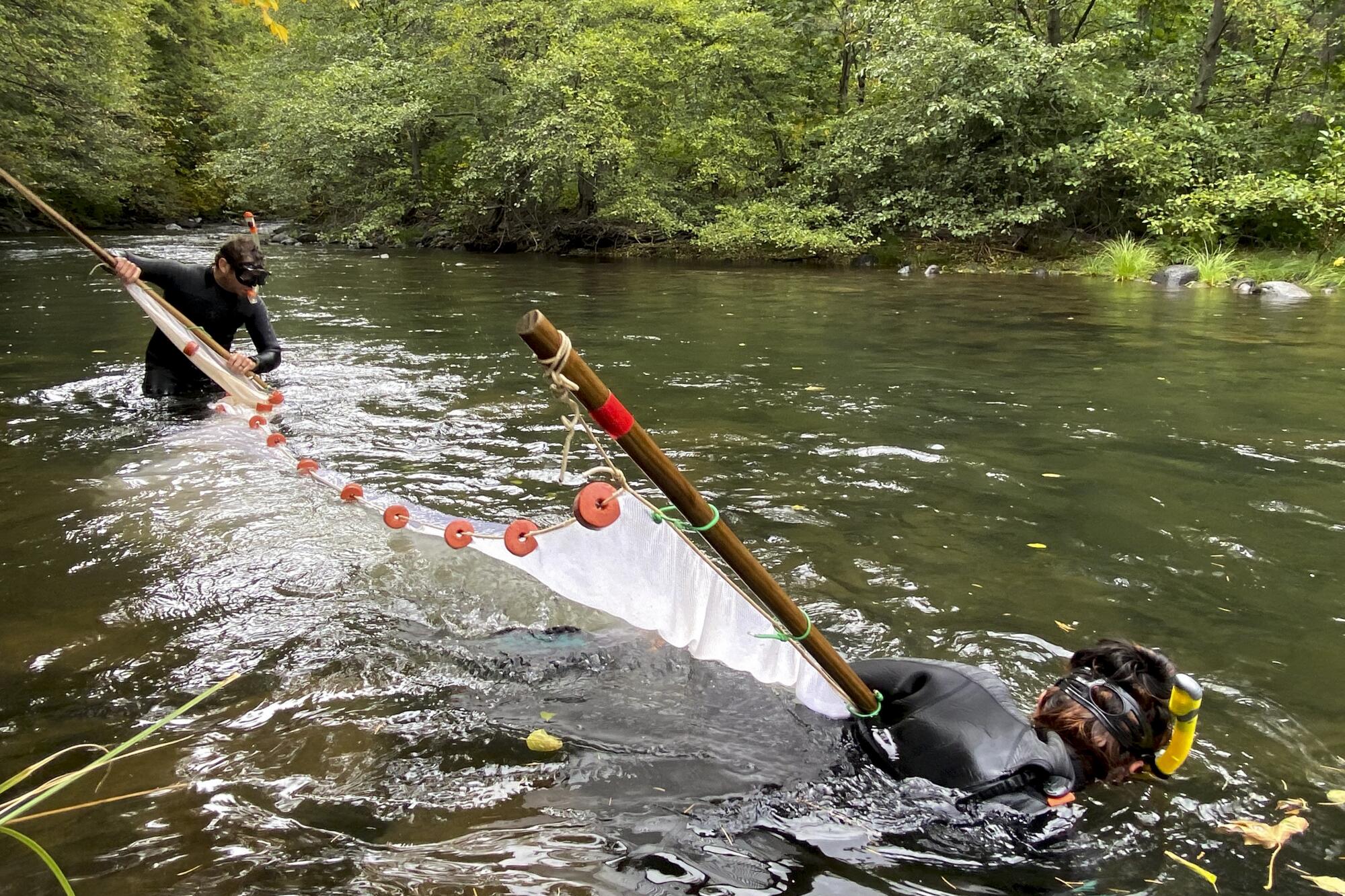-
Billy Bob Thornton, Jon Hamm, Demi Moore: Who’s Who in ‘Landman’ Cast? - 5 mins ago
-
Alyssa Valdez sparks Creamline sweep of Petro Gazz - 7 mins ago
-
Falklands’ avian flu, Government support for those emotionally affected by the situation — MercoPress - 9 mins ago
-
Shock as Rutland man told ‘there’s a cow in your pool’ - 11 mins ago
-
Internet Outraged by Man’s ‘Distracting and Rude’ Behavior During Movie - 23 mins ago
-
Transform your space with these smart home essentials – National - 25 mins ago
-
Cameron Diaz Makes Comeback with Netflix Spy Comedy ‘Back in Action’ - 28 mins ago
-
A Guide To Choosing Reliable Online Lottery Sites - 30 mins ago
-
Venezuelan ambassador returns to Brasilia — MercoPress - 32 mins ago
-
Father of drowned teen urges secondary school swimming lessons - 34 mins ago
California bans salmon fishing on rivers for a second year

Because of declining salmon populations, California has canceled fishing in rivers for a second year. Here, state biologists collect young spring-run chinook salmon in Deer Creek in October.
(Peter Tira / California Department of Fish and Wildlife)
California regulators have decided to ban fishing for chinook salmon on the state’s rivers for a second year in a row, in effort to help the species recover from major population declines.
The unanimous vote by the California Fish and Game Commission on Wednesday follows a similar decision last month to prohibit salmon fishing along the California coast this year.
The decision will shut down the recreational salmon fishing season along the Sacramento, American, Feather, Mokulumne, Klamath and Trinity rivers, among others.
State officials have said salmon are struggling because of factors such as reduced river flows during the severe drought from 2020-2022, the effects of climate change, harmful algae blooms, and shifts in the species’ ocean diet.

Aggressive and impactful reporting on climate change, the environment, health and science.
Fishing advocates blamed Gov. Gavin Newsom and his administration, arguing that the state has been sending too much water to farms and cities, and depriving rivers of the cold flows salmon need to survive.
Scott Artis, executive director of Golden State Salmon Assn., said the main cause is “a horrendous water policy that green lights unsustainable water diversions out of our salmon rivers.”
Artis reiterated his group’s opposition to the state’s proposal to build the Delta Conveyance Project, which would reroute water in the Sacramento-San Joaquin River Delta, as well as its plan to build Sites Reservoir in a valley north of Sacramento. He said these projects would cause further harm to fish, and argued that Newsom’s policies are “turning California’s rivers into ghost towns for salmon.”
State officials have said they are prioritizing plans to help salmon populations recover. Newsom’s administration in January announced a salmon strategy plan outlining a series of expanded efforts, including restoring habitats, modernizing hatcheries and removing barriers that block fish migration.
Charlton “Chuck” Bonham, director of the California Department of Fish and Wildlife, said in a recent interview with The Times that even as the fishery goes through this difficult time, state officials are focused on actions that can “change the trajectory.” He said these efforts include restoring wetlands to create more habitat, removing dams on the Klamath River and protecting flows and water quality in rivers to support fish.
“Hope is very much alive for salmon in California,” Bonham said. “We think they can not only hang on in the state but thrive, and get back to healthy numbers each year, where people can enjoy them.”
This year is the fourth in state history that no salmon fishing has been permitted. The other back-to-back closure occurred in 2008 and 2009.
California rivers once teemed with salmon, but the construction of dams blocked the fish from reaching many of the cold mountain streams where they once spawned. For decades, government-run hatcheries have reared and released millions of salmon each year. Those efforts, however, haven’t been enough to prevent populations from declining.
Successive droughts and global warming have also taken a toll. During the 2020-22 drought, the water flowing from dams sometimes got so warm that it was lethal for salmon eggs.
California’s commercial and recreational fishing industries depend on fall-run chinook, which migrate upstream as adults from July through December. Some fish return to the hatcheries where they were released, while others spawn along tributaries of the Sacramento, San Joaquin and Klamath rivers.
Salmon are also central to the cultures of Native tribes, whose leaders canceled subsistence fishing last year.
Other salmon runs in California have declined to a point that they are at risk of extinction. Spring-run chinook are listed as threatened under the Endangered Species Act, and winter-run chinook are endangered.
Source link





























